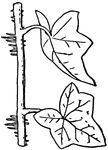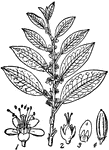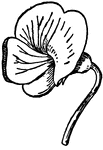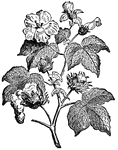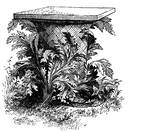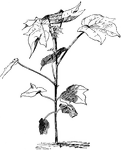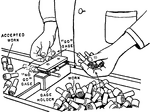
Machinery
General arrangement of machinery. A, upcast shaft; b, winding gear; c, downcast shaft; d, porch; e,…

Steam Engine
Cross-section of a steam engine plant with Alberger barometric condenser and cooling tower.
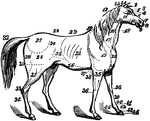
Horse
The anatomy of a horse. 1, ears; 2, forelock; 3, forehead; 4, eyes; 5, eye-pits; 6, nose; 7, nostril;…
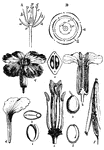
Structure of a Flower
Flower anatomy. A, sectional view of a flower showing the vertical disposition of whorls. a, sepal of…
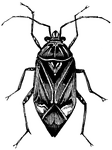
Phytocoris
A genus of plant bugs, having the beak extending to the middle of the abdomen and the sides of the head…

Pine Sap
1, Flowering plant of the pine sap (Hypopitys multiflora); 2, plant with fruits. a, a, flower; b, fruit.
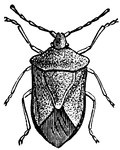
Plant-bug
Dotted leg plant-bug, one of many different heteropterous insects which suck the juices of plants.
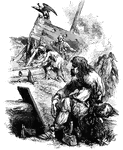
Ship Wreck
A ship wreck with men trying to repair or salvage parts. One man rests on a rock, staring at a panel.…

Corn Plant
Corn plants with the surface of the soil "laying by" in accordance to the Williamson Plan.

Corn Smut
Corn smut is a plant disease caused by the pathogenic fungus Ustilago maydis that causes smut on maize…
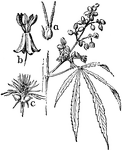
Hemp Leaf and Flowers
Leaf and flowers of the hemp plant (Cannabis sativa). A and c are female flowers, while b is a male…
Sweet Potato Plant
A branch of a vineless sweet potato plant, showing the crowded position of leaf stems.

Planting Dibbles
Devices used to set sweet potato slips and vine cuttings. In setting out potatoes, the farmer uses either…
Sugar Cane Stripping Device
A device that strips sugar cane of its leaves. The stripper consists of a wooden handle, to one end…
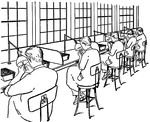
Bench Inspectors
Group of workers inspecting small parts under lamps. They are seated on high stools with backs.
Test Indicator
Universal dial test indicator used to take fine measurements during inspections of parts.

Prothallus (under side)
The flat, heart shaped body which results from the development of a spore of a fern.
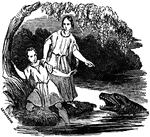
Tobias Attacked by a Monstrous Fish
"And Tobias went forward, and the dog followed him, and he lodged the first night by the river of Tigris.…

Prickly Saltwort
Salsola kali. This plant is also called a Russian Thistle, Prickly Glasswort, Tumbleweed, and Glasswort.…

Salvadora
Salvadora Persica. Also called toothbrush tree, mustard tree, and mustard bush. This image includes…
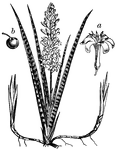
Snake Plant
Sansevieria Zeylanica is the Latin name, but this plant is also called a Mother-in-law's Tongue. "A…
Ryegrass Leaf with Sheath
Lolium perenne. A sheath, in botany is "the part of an expanded organ that is rolled around a stem or…
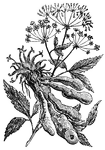
Skirret
Sium sisarum. "A species of water parsnip, generally said to be of Chinese origin, long cultivated in…
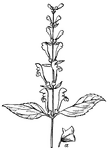
Skullcap - Upper Part of the Flowering Stem
"A plant of the genus Scutellaria: so called from the helmet-like appendage to the upper lip of the…

Pulleys - Smeaton's Blocks
"A system of pulleys in two blocks, so arranged that the parts of continuous rope are approximately…
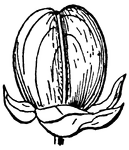
Seneca Snakeroot - the Fruit
"Polygala senega of eastern North America. It sends up several stems from hard knotty root-stocks, bearing…

Sow Thistle - Stem with Heads, Basal Leaves, Flower, Achene with Pappus
"A plant of the genus Sonchus, primarily S. oleraceus, a weed of waste places, probably native in Europe…

Spearmint Flower
"An aromatic plant, Mentha viridis, the common garden-mint, or mint proper. It is known chiefly in gardens,…
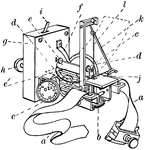
Sphygmograph with All Parts Labeled
"An instrument which, when applied over an artery, traces on a piece of paper moved by clockwork a curve…

Spiderwort Inflorescence
Tradescantia virginica. "It is a native of the central and southern United States, and was early introduced…
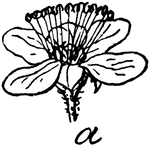
Hardhack Flower
Spiraea tomentosa. Also called Steeplebush and Meadowsweet, this plant grows up to four feet high. This…

Hardhack Fruit
Spiraea tomentosa. Also called Steeplebush and Meadowsweet, this plant grows up to four feet high. This…

Hardhack Leaf
Spiraea tomentosa. Also called Steeplebush and Meadowsweet, this plant grows up to four feet high. This…

